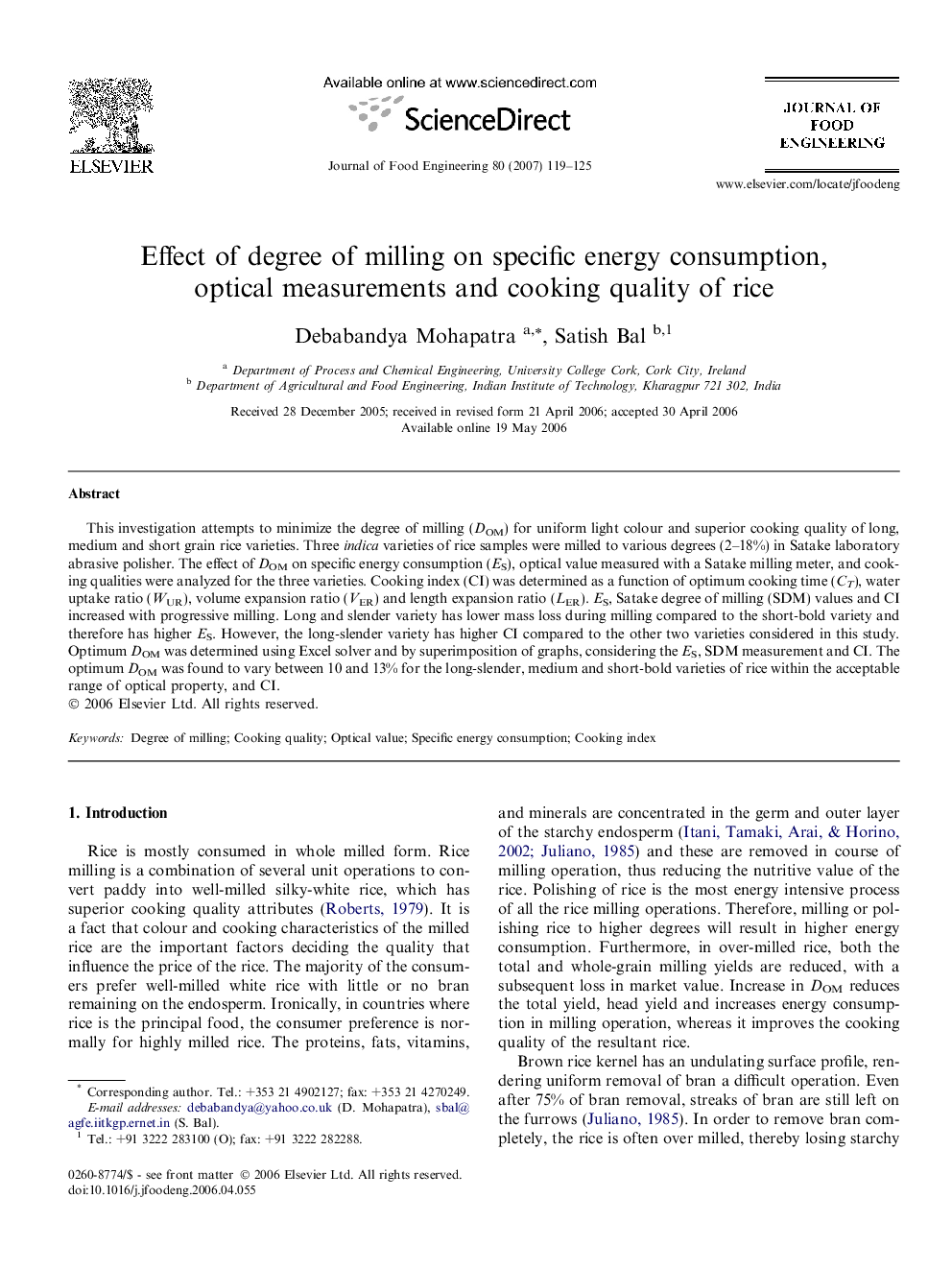| Article ID | Journal | Published Year | Pages | File Type |
|---|---|---|---|---|
| 226307 | Journal of Food Engineering | 2007 | 7 Pages |
This investigation attempts to minimize the degree of milling (DOM) for uniform light colour and superior cooking quality of long, medium and short grain rice varieties. Three indica varieties of rice samples were milled to various degrees (2–18%) in Satake laboratory abrasive polisher. The effect of DOM on specific energy consumption (ES), optical value measured with a Satake milling meter, and cooking qualities were analyzed for the three varieties. Cooking index (CI) was determined as a function of optimum cooking time (CT), water uptake ratio (WUR), volume expansion ratio (VER) and length expansion ratio (LER). ES, Satake degree of milling (SDM) values and CI increased with progressive milling. Long and slender variety has lower mass loss during milling compared to the short-bold variety and therefore has higher ES. However, the long-slender variety has higher CI compared to the other two varieties considered in this study. Optimum DOM was determined using Excel solver and by superimposition of graphs, considering the ES, SDM measurement and CI. The optimum DOM was found to vary between 10 and 13% for the long-slender, medium and short-bold varieties of rice within the acceptable range of optical property, and CI.
